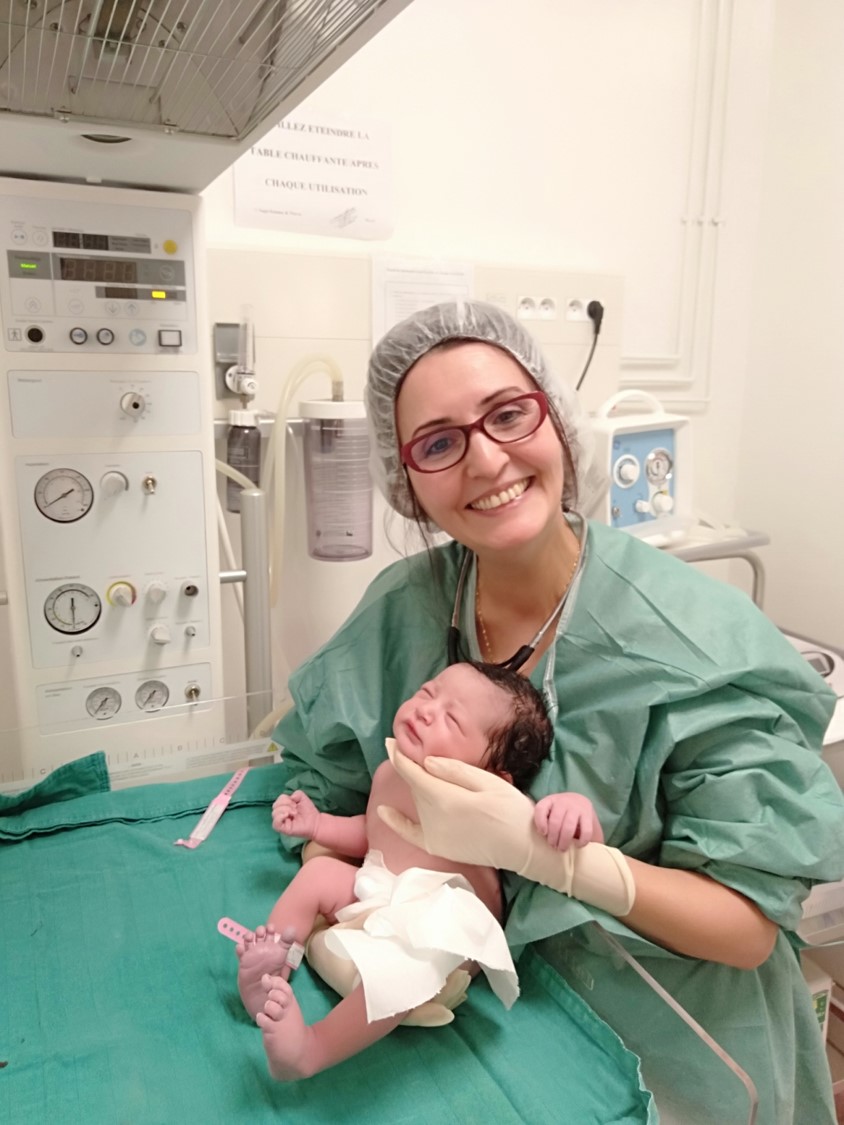 Dr Amina Barkat, Head of Neonatal Medicine and Resuscitation at Ibn Sina Children's Hospital of Rabat, Morocco, holds a newborn baby girl1 June 2020 – In an online conference on a Wednesday afternoon in May 2020, the background noise is particularly revealing. Shouts of children and gurgles of babies echo as women and men in Morocco adjust their microphones and headsets. For the next 2 hours, these birth specialists — hundreds of Moroccan nurses, midwives, and doctors — will be trained in preventing the spread of COVID-19 as they care for pregnant women and newborns.
Dr Amina Barkat, Head of Neonatal Medicine and Resuscitation at Ibn Sina Children's Hospital of Rabat, Morocco, holds a newborn baby girl1 June 2020 – In an online conference on a Wednesday afternoon in May 2020, the background noise is particularly revealing. Shouts of children and gurgles of babies echo as women and men in Morocco adjust their microphones and headsets. For the next 2 hours, these birth specialists — hundreds of Moroccan nurses, midwives, and doctors — will be trained in preventing the spread of COVID-19 as they care for pregnant women and newborns.
As the “room” fills up — first with 472 participants, then 547, then 650 — it’s clear that many of these health workers are juggling work and family, anxious not to infect their patients or their own children at home. That’s the goal of the webinar: to train participants on guidelines for pregnancy, childbirth and newborn care during the COVID-19 pandemic. After the usual pleas to turn off microphones, the webinar organizers make introductions. Several medical experts will tackle topics like vertical transmission — whether a disease can be passed on during the birthing process — as well as procedures for childbirth and caesarean sections for pregnant women suspected or confirmed to have COVID-19. The training will also cover care of newborns, including breastfeeding and vaccinations. As the doctors talk, the health workers can type in their questions to be answered after the PowerPoint presentations. In the chat room, dozens of questions begin scrolling down the screen. “Should we always ask for a COVID-19 test for all feverish pregnant women?” “How are asymptotic pregnant women detected?” “For women in rural areas giving birth at home, what hygiene measures can they take to be protected against the virus?” “What are the first steps to take in the event of accidental exposure to saliva droplets (context COVID-19)?”
“Does breast milk transmit COVID-19?” ask numerous participants.
Some of the questions are answered by the presentation slides. The specialists — from WHO’s reproductive health collaborating centre and neonatal medicine and resuscitation service — are clear that breastfeeding is recommended in nearly all cases, and underscore that asymptomatic babies should receive their vaccinations on schedule. “Avoid needless separation of mother and baby,” emphasizes one presenter.
Some of the participants’ questions are easily answered. “If a woman with COVID-19 respiratory distress is giving birth, should I start oxygen?” asks a midwife. “You must!” says the presenter, Director of WHO’s Reproductive Health collaborating centre. Other questions take longer — such as issues related to the heat and humidity settings of incubators for babies who may have COVID-19. The specialists advise the health workers to review new COVID-specific protocols written by Morocco’s Ministry of Health.
This training session follows a first session held for managers of maternal and child health services. Both trainings were organized by Morocco’s Ministry of Health, in collaboration with WHO, UNFPA and the WHO reproductive health centre.
Above all, the health workers flooding the webinar with questions want to save lives — the lives of both mothers and babies. They ask about COVID-19 signs to watch for in newborn babies. “If the baby breathes well, has a good colour, and good movements, it is probably OK,” says one of the presenters, and goes on to talk about special cases.
As the webinar closes, murmurs of appreciation fill the chat room: “Well explained” “Lots of details, thanks” "Thanks for this rich and important presentation." The attendee numbers drop from 500 to 400 to 300 as the participants sign out. With their focus always on the well-being of mothers and babies, hundreds of Morocco’s health workers are now better informed about COVID-19 — and better able, in the words of one presenter, “to overcome this epidemic.”
The online training “Care for pregnant women and newborns in the context of COVID-19” for Moroccan health workers was organized by WHO Morocco and UNFPA and funded by the US Agency for International Development.


